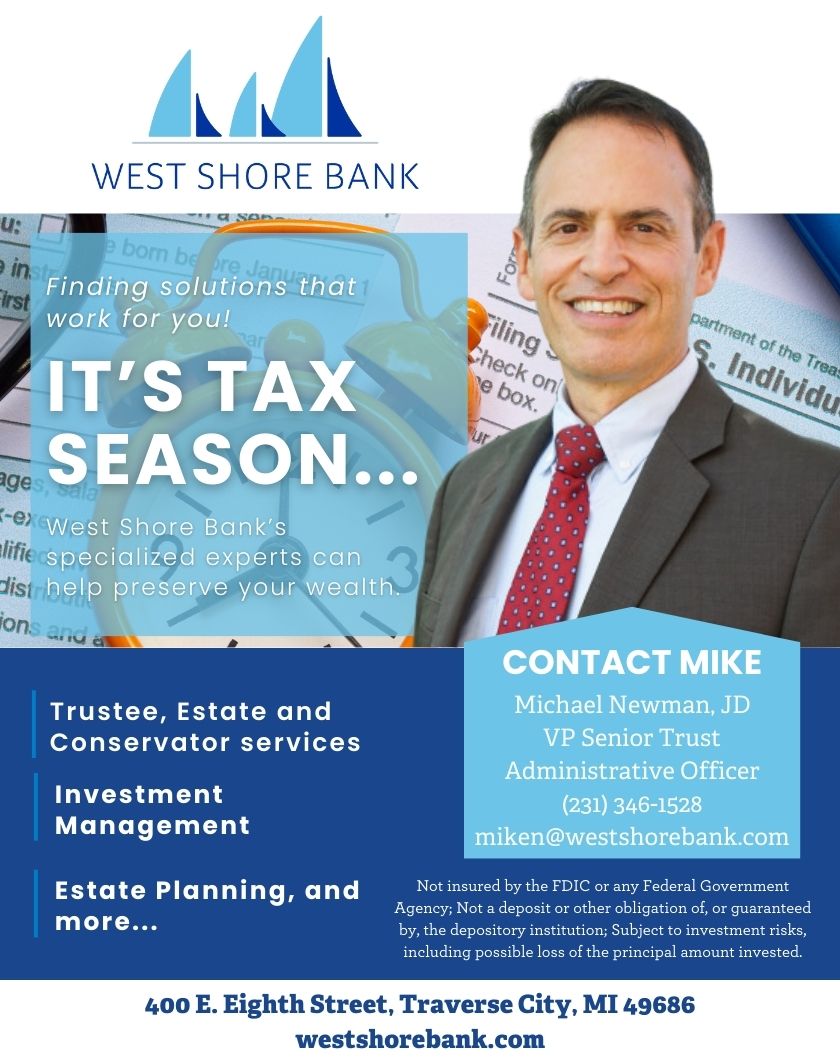
Economy Up, Donations Up?
By Ross Boissoneau | Oct. 13, 2018
Are northern Michigan charitable donations on the rise amidst a booming economy? It depends, though some local nonprofits report an increased reliance on fewer yet larger donors.
“The average gift is up slightly in 2018, but so far this year fewer donors are contributing,” says Thom Paulson, development director at the City Opera House, who adds that this year is relatively unchanged versus last year overall.
Tim Dougherty, vice president of advancement at Interlochen Center for the Arts, says more than 90 percent of the donations for its “Create Amazing” campaign have come from fewer than ten percent of its donors.
Anthony Rupard, director of development at the Grand Traverse Regional Land Conservancy, says what used to be a ratio of 80/20 (80 percent of funds from 20 percent of donors) is now closer to that 90/10 figure as well.
That seems to be a trend nationally. According to Non Profit Quarterly, there has been adecline in the participation and amounts donated by “small” and “medium” donors and an increasing reliance on “large” donors.
There are other variables at play as well, such as the new tax laws, some of which are negatively impacting giving rates. “We've been paying close attention to charitable giving here and around the U.S., and we've seen giving levels lag all year,” says Tom Nelson, executive director of theLeelanau Conservancy. He too points to uncertainty surrounding tax laws as well as questions about the impact of tariffs and politics in general as among the reasons, and he’s not alone.
“National experts seem to be pointing to the uncertainty surrounding the new tax laws and the urgency surrounding political campaigns as driving much of the difference in giving levels this year. The economy is robust, but the concern over a delayed impact from tariffs seem to be adding to the uncertainty.”
“There are so many variables,” agrees Dougherty. ICA is in the end stages of its six-year “Create Amazing” capital campaign, the last two years of which have been public. Its original goal was $100 million, which has been upped twice as donations have come in. “We were surprised that we reached it far more quickly.” It’s currently over $133 million.
Munson Healthcare Foundation is also in the midst of a six-year campaign. Desiree Worthington, chief development officer of Munson Healthcare, says the campaign kicked off its $36 million Campaign July 1, 2015, and has thus far raised over $29 million. “It’s been a strong year. People want to keep health care vibrant,” she says.
Officials at Grand Traverse Area Catholic Schools say there is a clear pattern of increased giving during times of economic growth and prosperity. Event ticket sales and raffle ticket sales for this year’s annual Gladhander fundraiser are slightly ahead this year. Officials are hopeful the 2018 Gladhander may experience its highest proceeds in event history.
The Conservancy's Rupard says large-scale campaigns may not be the best way to measure the types of people donating. The land conservancy is in the midst of its own six-year campaign. “You ask for much larger gifts than normal,” he says.
He believes the current economic situation is helping such campaigns. “Folks that feel really good about their assets want to do this before there’s a downturn. Some have accelerated their timeline,” he says.
“Generally, people give two percent of their disposable income,” says Worthington, citing figures from Giving USA, the longest-running annual report on charitable giving. If someone’s income rises, so does the amount of that two percent. Plus, “If the economy goes up, they have the ability to be more generous,” Worthington notes.
“Only in the long run will we know how all these things play out,” says Steve Wade, vice president for gift planning at the Grand Traverse Regional Foundation. “Giving is on a par with what we’ve had historically. Is there a correlation to the economy? I can’t say.”
Wade and others say planned giving has helped their organizations regardless of changing economics, though that means sometimes waiting a long time for funds from an estate or trust set in place years earlier. In the case of the foundation, endowments provide a recurring source of income. “We aren’t out there trying to raise money for operating expenses. That’s the difference between us and some other organizations.”
Even those that are currently doing well in their fundraising efforts say things can change, due to a shift in the economy, new laws, or the fact their usual benefactors have already donated. “The last couple million are always the most difficult to raise,” says Worthington.







